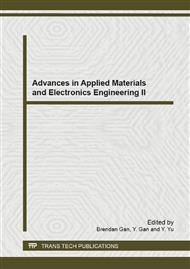p.198
p.203
p.207
p.212
p.217
p.222
p.226
p.230
p.234
To Recognize Sources of Pollution in Dapeng Bay by Sediment Quality in Southern Taiwan
Abstract:
Canonical discriminant analysis (CDA) was applied in order to distinguish the sediment-quality parameters from neighboring rivers, and to recognize similarities of sediment properties between lagoon and neighboring rivers. Two set of constructed discriminant functions showed a marked contribution to most of the discriminant variables. In sediment, the significantly parameters - porosity, Cd, Cr, Al, and Pb were combined as the heavy metal factor. The recognition capacities of the two discriminant functions were 82.6 and 17.4, respectively. The Dapeng Bay had no significant similarity with the three neighbouring rivers with the sediment properties.
Info:
Periodical:
Pages:
217-221
Citation:
Online since:
April 2013
Authors:
Price:
Сopyright:
© 2013 Trans Tech Publications Ltd. All Rights Reserved
Share:
Citation:


